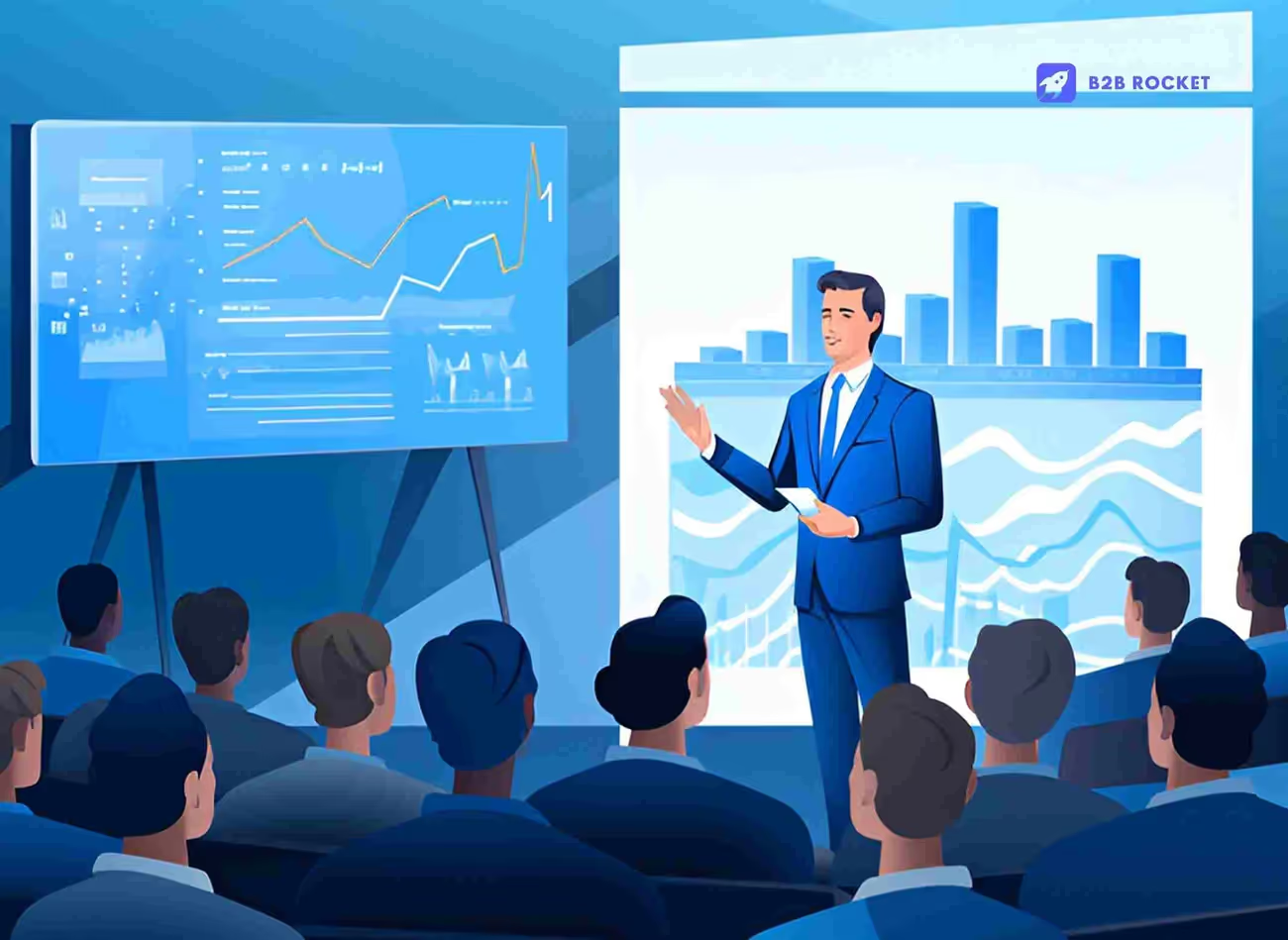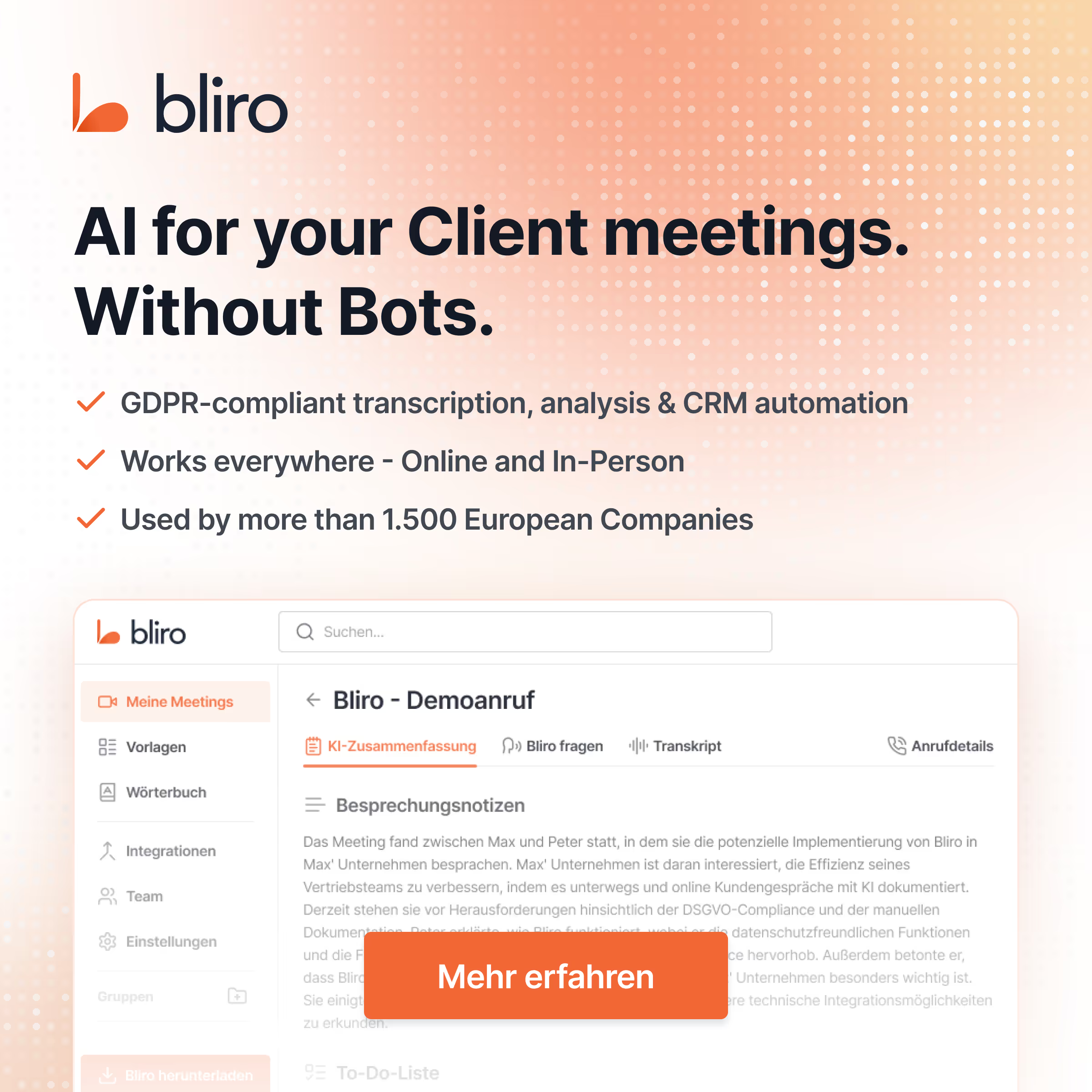Learn how B2B sales professionals use strategic storytelling to increase their closing rates. Remain facts are 22 times better remembered when they're part of a story. This effect has deep roots - people were already using stories to transfer information over 6,000 years ago.
The challenge for sales teams is increasing: With an average attention span of just eight seconds, sales professionals must create emotional connections that stick. Scientific studies show that emotional narratives release dopamine and oxytocin. Dopamine increases attention, while oxytocin, as a “trust hormone,” increases the attention bond between seller and customer.
B2B decision makers confirm this need with specific numbers: 48 percent of buyers want more objective content, 51 percent find it difficult to find suitable content. Particularly relevant: 58 percent of B2B decision makers share content with colleagues on the Buying Committee when they tell a story.
In this practical guide, discover proven storytelling methods for B2B sales - from opening talks to handling objections. You'll also learn how tools like Bliro document your customer stories in a GDPR-compliant manner and make them available at the decisive moment.
Why B2B storytelling is proven to improve sales results

Business customers make buying decisions differently than expected. Although rational arguments should dominate, studies show that even complex B2B decisions are primarily based on emotional factors. People only justify their choice with logic retrospectively.
Emotional buying decisions: The science behind B2B businesses
The human brain works with two decision systems: a fast, emotionally controlled system and a slower, more rational system. This insight also applies to business customers: 56% of all B2B buying decisions are made on an emotional basis.
Further research impressively confirms these findings. B2B buyers are 50% more likely to buy when they can emotionally connect with a brand. Emotional marketing strategies even outperform rational approaches by seven times over the long term.
Authentic stories create trust without sales phrases
Trust forms the basis of successful business relationships. Authentic customer stories demonstrate competence and enable prospects to find themselves in similar situations.
Credibility determines success - stories that sound “too perfect” seem fake. Share real challenges, solutions, and results. This honesty creates human connections beyond technical product data.
B2B decision makers reject traditional sales presentations
Modern business customers process vast amounts of information every day under high time pressure. Technical product presentations and detailed data sheets overwhelm and confuse more than they are convincing.
Instead, B2B customers need content that:
- Specific business challenges addressed
- Complex topics explained in an understandable way
- Emotionally appeals and sticks
- Demonstrates professional competence
That explains why 71% B2B buyers buy when they see personal benefits. Stories combine rational arguments with emotional relevance - they reach the head and heart of your customers at the same time.

4 proven storytelling methods for B2B sales teams
B2B sales calls need more than product data and price lists. These four proven storytelling techniques help sales professionals communicate complex solutions in an understandable way and accelerate purchasing decisions.
1. The Hero's Journey: The customer as the hero of his story
The Hero's Journey positions your customers as protagonists of their own success story. The tried and tested pattern: Customer (hero) is faced with a challenge, meets an experienced mentor (your company) and with his help overcomes all obstacles until successful completion.
This method works because it gives the customer the main role - not your product or service. Bliro automatically documents each customer's specific challenges, so you and all salespeople can develop tailor-made hero journeys.
2. The story brand method: Your company as a strategic guide
Donald Miller's StoryBrand framework has sold over 1.4 million copies and is changing the way companies communicate with customers. Here you position yourself as an experienced guide who helps the hero (customer) solve his problem.
Companies report impressive results after implementing StoryBrand - quadrupled sales and leads worth millions in just the first month. Success is based on consistently placing the customer at the center of the story.
3. The three-act structure: build up and release tension
This classic narrative technique from the theatre works particularly well in B2B sales talks and business consulting:
- Situation: Be neutral about the customer's current situation
- Complication: Highlight the problem and the effects
- Solution: Show how your offer fixes the problem
Connecting words such as “however” and “therefore” create structure and keep the listener's attention.
4. The PAS formula: problem, amplification, solution
This copywriting technique can be transferred directly to sales calls:
- Problem: Name a specific customer issue
- Reinforcement: Clarify the consequences of the unresolved problem
- Solution: Present your offer as a logical answer
Bliro helps you to systematically capture all storytelling methods and retrieve them at the right time. Each sales conversation thus becomes a targeted story with the customer at the center.
Storytelling in everyday sales: Practical implementation for immediate results
Practical application determines your storytelling success. Persuasion research with Neuroscans shows: Stories activate our limbic system - the area for intuition, emotion and association. In addition, there is a “synchronization effect” between narrator and listener with identical brain activation.
Opening talks with targeted stories
Start sales talks with relevant customer examples instead of technical details. Use openings like: “We recently helped a company in your sector solve a similar problem...” This method creates immediate relevance and emotional connection.
Handling complaints through customer stories
Respond to customer concerns with concrete examples of success. Answer: “I understand your concern. Ms. Weber from Mustermann GmbH initially had the same concerns. She was surprised though how...” Stories are less confrontational than direct reasoning.
Success stories as a sign of trust
Customer testimonials provide the strongest sign of trust. Nielsen studies confirm that recommendations from real people have significantly more weight. 97% of B2B customers describe success stories as the most reliable content. Position the customer as a hero who overcomes challenges through your solution.

Systematic documentation with Bliro
Bliro collects customer stories automatically and in compliance with GDPR, without additional “recorders.” Concentrate completely on the conversation -all important stories are available later for sales calls, follow-ups, and team knowledge.
4 critical storytelling mistakes that cost B2B sales teams customers
B2B storytelling often fails due to avoidable mistakes. Many sales teams lose potential deals due to misdirected stories. You should definitely avoid these four pitfalls:
1. Position your own company as a hero
Avoid excessive self-praise. Companies that make themselves the hero of the story do not create an emotional connection. Potential customers switch off when you focus on your company instead of their challenges. Bliro helps you document customer-focused stories and focus on real customer needs.
2. Use complex or endless narratives
B2B decision makers have limited time. Don't overload your stories with technical terms or unnecessary details. Business professionals need quick, actionable insights instead of lengthy explanations. Keep stories concise - a maximum of two and a half minutes.
3. Forget calls to action
An effective story without a clear next step is a missed opportunity. Your call-to-action determines sales success. Studies show that an effective CTA can increase your revenue by 83%. Avoid complicated steps - every hurdle costs deals.
4. Neglect target group-specific adjustment
B2B decisions are made by teams with different priorities. A blanket story fails to have an effect. Technical experts need different stories than commercial decision makers.
Conclusion
B2B storytelling surpasses traditional sales methods with measurable benefits: Emotional connections increase the willingness to buy by up to 50%, while the brain reacts emotionally and rationally justifies even when making complex business decisions.
The method plays a secondary role - whether hero's journey, StoryBrand framework, three-act structure or PAS formula. Three factors are decisive: Focus on customers, keep stories concise and adapt them to the respective target group. Every story needs a clear next step.
Bliro makes your storytelling systematic and scalable. Automatic conversation analysis documents customer stories in a GDPR-compliant manner without you having to log. Focus on the conversation - Bliro ensures that no important story is lost.
Successful B2B sales teams are already using strategic storytelling. Combine proven narrative techniques with the right documentation technology and sustainably increase your completion rates. Start collecting your customer stories systematically today - the results speak for themselves.




